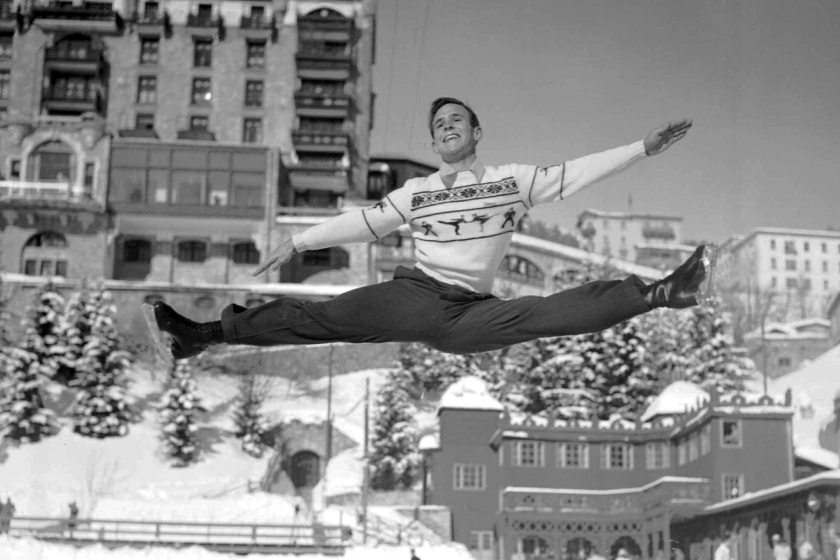Teen Fencing Team Is Out to Make a Point
- Share via
NORTH HILLS — A group of Monroe High School students is earning a reputation for pulling out its blades at school.
Armed with foils, sabers and epees, the students--from a wide range of athletic backgrounds--comprise the Los Angeles Unified School District’s only school-supported fencing team. A crew of four today begins four days of competition at the U.S. Fencing Assn.’s Summer Nationals in Austin, Texas.
With their full-body white suits, the duelers look the part of gentlemanly, yet deadly foes as they defend their ground on the 4-foot-wide fencing strip.
“It’s one of those things that’s kind of cool because no one else knows how to do it,” Nasirra Nikola said. “It’s for the romance of it.”
But on closer inspection, the worn equipment and bent swords reveal a more threadbare crew. And for all the romance of the sport, Coach Greg Schiller says he has found it tough to recruit athletes from higher-profile sports.
Last month, the coach plastered the Monroe campus with invitations to join the squad. But while the gym filled up with boys trying out for basketball, only a few familiar faces showed up at the science classroom where the fencing crew suits up.
“To some students, if there’s no ball, there’s no sport,” Schiller said. “We advertise like you wouldn’t believe. We end up with some with a great deal of athletic ability, and some with very little athletic ability who still do well.”
Schiller admits the prospects for the Monroe team winning the tournament are slim. But somehow, after six years of Schiller paying the crew’s expenses out of his own pocket, just getting the ragtag bunch to Texas with the school’s financial blessings to continue next year is a victory in itself.
“We’ve had a team place first in saber for Southern California and still have to work with mostly donated, used equipment that was falling apart,” Schiller said. “If it weren’t for the kids, it would be totally demoralizing.”
It’s hard to tell how good any of these guys are without stepping on the strip against them. I am a 210-pound former high school football player who has seen nearly every episode of the “Highlander” and the movie “Zorro” twice, so I figured I could take any one of them.
After a few warm-up drills, my right shoulder was burning from holding the weight of the steel blade. I was not accustomed to the grip of the epee. The others were still thrusting and parrying with vigor. Each swing of their blades cut away another piece of my confidence.
Practice was grueling enough without the added inconvenience of having to look through the screen on the helmet.
Jacoa Taylor, a sinewy 6-foot 3-inch senior, coached me through touch drills. More advanced team members like Jacoa help coach the younger fencers.
Jacoa suffers from dyslexia, and said coping with the syndrome through high school helped him understand the techniques needed for good fencing.
“I’ve learned to take everything as a challenge, a challenge I can either go through or around,” said Jacoa, who recently placed third in a qualifying tournament.
*
While working with Jacoa, I watched Howard Goldstein closely because I knew he was Schiller’s ace. If I beat Howard in a match at the end of practice, I figured, there would be no “Monroe Takes Tournament” story to write.
This guy looks as nonthreatening as they come. He is so skinny he could almost hide behind a foil. His mother said she was afraid for him to take up any sport because he was a sickly child prone to getting hurt.
But for all its gentlemanly ways, fencing is a physical, sometimes brutal sport. Opponents, with headgear off, may bow to each other and to judges before a match. Players never point their weapons toward each other unless they are engaged in battle. And following a match, right-handed fencers shake hands with their left.
“It wouldn’t be polite” to shake conventionally, Jacoa said after we completed touch drills. “I just tried to kill you with my right.”
Yet Matthew McFarland said he has been hurt worse by swords whipping to a pop through his padding than he has as an interior lineman in football.
“Football has more padding,” Matthew said. “And you have teammates to help you out. On the strip, it’s just you, this thin padding and your blade.”
Brute strength is enough for a win at the lower skill levels. In my first match to determine if the penman is mightier than the swordsman, I pummeled sophomore junior varsity fencer Omar Landa out of his technique for a 5-2 victory.
Before the guilt of manhandling a 145-pound 15-year-old set in, Matthew taught me that competition fencing is about touches, not powerful roundhouse swings. I got the point--the tip of his epee tapping my wrists for painless yet equally valuable points. He won the match 5-2.
Matthew and some of the others practice with other teams at Valley College and Westside Fencing Center after they finish at Monroe. He said he learned some of the more subtle techniques from an “old Russian fencer standing outside smoking at Westside.”
OK. Think subtle. Think touch, I told myself at the beginning of the match with Howard. The ace showed why he has ranked in the top eight in the state twice this year. The tip of my sword and his body repelled one another like two same-poled magnets. Everywhere I poked or lunged, his stringy body maintained a 2-inch repellent field.
He was not perfect though. I managed to sneak a blade under his guard and into his forearm for my only point in the match. In return, I took two stabs to my elbow, two to my side and one grazing of my hand. Howard was victorious.
“Don’t feel bad,” Schiller said. “Howard’s really good. He beats me sometimes.”
More to Read
Go beyond the scoreboard
Get the latest on L.A.'s teams in the daily Sports Report newsletter.
You may occasionally receive promotional content from the Los Angeles Times.






